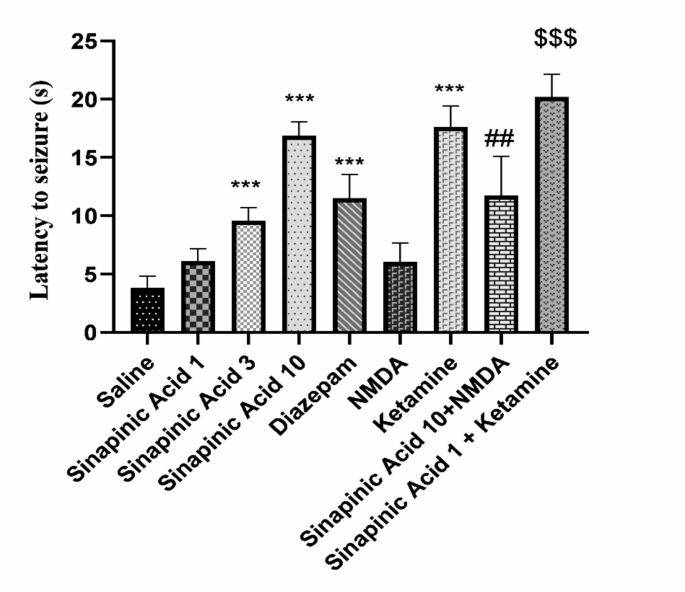Epilepsy, a debilitating neurological condition affecting millions worldwide, has long posed a challenge for researchers and clinicians. However, a recent study sheds light on a promising natural compound that could revolutionize the way we approach this disorder. Sinapinic acid, a phenylpropanoid found in various plants and foods, has been the focus of intense investigation for its potential therapeutic applications in epilepsy.
The study, conducted by a team of researchers from Shahrekord University of Medical Sciences in Iran, delves into the intricate mechanisms by which sinapinic acid may exert its anticonvulsant effects. By exploring the compound’s interactions with N-methyl-D-aspartate (NMDA) receptors and its influence on nitrite levels, the researchers uncover a multifaceted approach to tackling the underlying causes of seizures.
The findings from this comprehensive investigation hold significant implications for the development of novel and more effective treatments for epilepsy, potentially offering a natural, safer alternative to traditional pharmaceutical interventions. As the scientific community continues to delve deeper into the therapeutic potential of natural compounds, this research serves as a promising stepping stone towards a future where epilepsy may be managed more effectively, improving the quality of life for those affected.

Unraveling the Complexities of Epilepsy
Epilepsy is a neurological disorder characterized by recurrent seizures, which can have a profound impact on an individual’s daily life. The condition arises from an imbalance between excitatory and inhibitory neurotransmission within the brain, leading to hyperexcitability and the propagation of abnormal electrical activity across neuronal networks. Understanding the underlying mechanisms of epilepsy is crucial for developing effective treatments.
Sinapinic Acid: A Natural Compound with Anticonvulsant Potential
The study in focus explores the therapeutic potential of sinapinic acid, a natural compound found in various plants and foods, including mustard seeds, broccoli, and red cabbage. Sinapinic acid has long been recognized for its neuroprotective properties, and the researchers hypothesized that it may also possess anticonvulsant effects, potentially through its interactions with the NMDA receptor and its influence on nitrite levels.

Fig. 1
Investigating the Anticonvulsant Mechanisms of Sinapinic Acid
The researchers conducted a comprehensive set of experiments using male mice to unravel the complex mechanisms underlying sinapinic acid’s anticonvulsant effects. They randomly assigned the mice to various groups, administering different treatments, including sinapinic acid, the NMDA receptor agonist, the NMDA receptor antagonist, and the standard anticonvulsant drug diazepam.
The team then induced seizures in the mice using pentylenetetrazole (PTZ) and measured the onset time of the seizures, as well as the levels of nitrite in the serum and prefrontal cortex (PFC) of the brain. Additionally, they assessed the gene expression of NMDA receptor subunits, NR2A and NR2B, in the PFC.

Fig. 2
Unraveling the Mechanisms: Key Findings
The study revealed several intriguing findings:
1. Seizure Onset Time: Mice treated with higher doses of sinapinic acid (3 and 10 mg/kg) exhibited a significantly delayed onset of seizures compared to the control group. This suggests that sinapinic acid may modulate the glutamatergic system, potentially by targeting NMDA receptors.
2. Nitrite Levels: Sinapinic acid administration at all tested doses (1, 3, and 10 mg/kg) significantly reduced nitrite levels in both the serum and PFC of the mice. This indicates that sinapinic acid may exert its anticonvulsant effects by regulating nitric oxide (NO) production and metabolism.
3. NMDA Receptor Subunit Expression: The study found that sinapinic acid differentially modulated the expression of NMDA receptor subunits. While the NR2A subunit expression showed a trend towards reduction, the NR2B subunit expression was significantly decreased in mice treated with sinapinic acid. This suggests that sinapinic acid may selectively target specific NMDA receptor subunits, contributing to its anticonvulsant properties.
Implications and Future Directions
The findings of this study hold significant implications for the development of novel and more effective treatments for epilepsy. By elucidating the multifaceted mechanisms by which sinapinic acid exerts its anticonvulsant effects, the researchers have paved the way for further exploration of this natural compound as a potential therapeutic agent.
The ability of sinapinic acid to modulate NMDA receptor activity and nitrite levels highlights its potential to address the underlying pathophysiology of epilepsy, which often involves excitotoxicity and oxidative stress. Moreover, the observed selectivity in the regulation of NMDA receptor subunits suggests that sinapinic acid may offer a more targeted approach compared to traditional anticonvulsant drugs.
As the scientific community continues to investigate the therapeutic potential of natural compounds, this study serves as a promising stepping stone towards the development of new, more effective, and potentially safer treatments for epilepsy. Further research, including studies on higher doses of sinapinic acid, its chronic effects, and its efficacy in various animal models of seizures, will be crucial in advancing our understanding and unlocking the full potential of this natural compound in the management of this debilitating neurological disorder.
Author credit: This article is based on research by Mohsen Ghasemi, Hossein Amini-Khoei, Elham Bijad, Mahmoud Rafieian-Kopaei, Antoni Sureda, Zahra Lorigooini.
For More Related Articles Click Here
